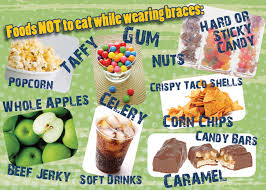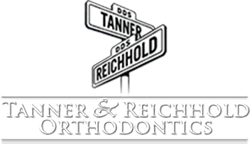
Orthodontic braces are used to straighten the teeth, which not only creates a more pleasing appearance, but also helps prevent tooth decay and other oral health problems. However, braces are only effective when they are properly cared for. For example, certain foods are better suited for individuals who have braces, as opposed to hard and sticky foods that can cause damage. So what types of foods should you or your kids eat to protect orthodontic appliances?
The best foods to eat with braces are those that are not high in sugar and do not require excessive chewing. For breakfast, try eggs, yogurt, bacon, wheat toast or oatmeal. Lunch may steer toward a banana rather than an apple, a salad without nuts and a glass of water. If you are looking for some after-school snacks for your kids, consider baked tortilla chips with salsa and guacamole or try string cheese with fruit.
A healthy dinner can include most types of vegetables, so long as they are cooked to an appropriate softness. Pair that with a lean protein, such as fish or chicken, and follow up with dessert. Just be sure to brush afterward!
What about foods to eat right after an orthodontic adjustment has just been made? As braces begin to move teeth into their proper alignment, the teeth will become sore and they may be sensitive to certain foods. During this time, it is best to eat soft foods such as pudding, jello, yogurt, mashed potatoes, soup, ice cream, smoothies, cottage cheese, peas, rice and pasta.
What about foods to avoid? According to the American Dental Association, anyone who wears orthodontic appliances, whether fixed or removable, should avoid excessive snacking and should aim to eat a healthy and balanced diet. Remember to cut your food into small pieces that can be easily chewed. You will want to avoid hard and chewy foods that can break your appliances such as corn on the cob, nuts, carrots, apples, ice, candy and bubble gum.
Braces, rubber bands, springs and other appliances associated with braces will normally attract food particles and plaque. Without the proper care, this could cause staining of your teeth. We recommend brushing after every meal or snack and carefully removing any food that might be lodged in the braces. A fluoride mouthwash might be helpful as well as flossing.
Regardless of what types of foods you eat with braces, it is important to keep the crevices between the teeth and around the braces very clean. That means brushing and flossing after meals to prevent the build-up of plaque and decay. Not only can failing to do so damage the teeth, but it can also cause discoloration.
By Dr. Gary Reichhold
JAN

About the Author:
Dr. Gary Reichhold and his partner Dr. Stephen Tanner have been proudly serving families in Concord, Walnut Creek, Clayton, Pleasant Hill and the surrounding communities for over 20 years. Their office is conveniently located in central Contra Costa County and their experienced team is committed to providing you and your family with exceptional orthodontic care.